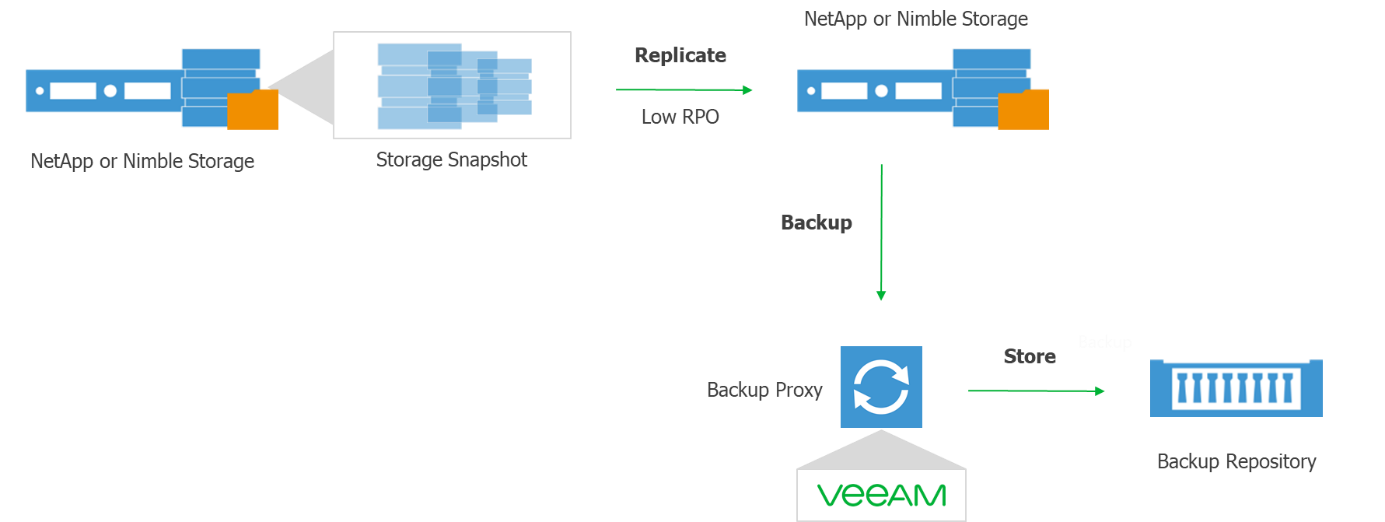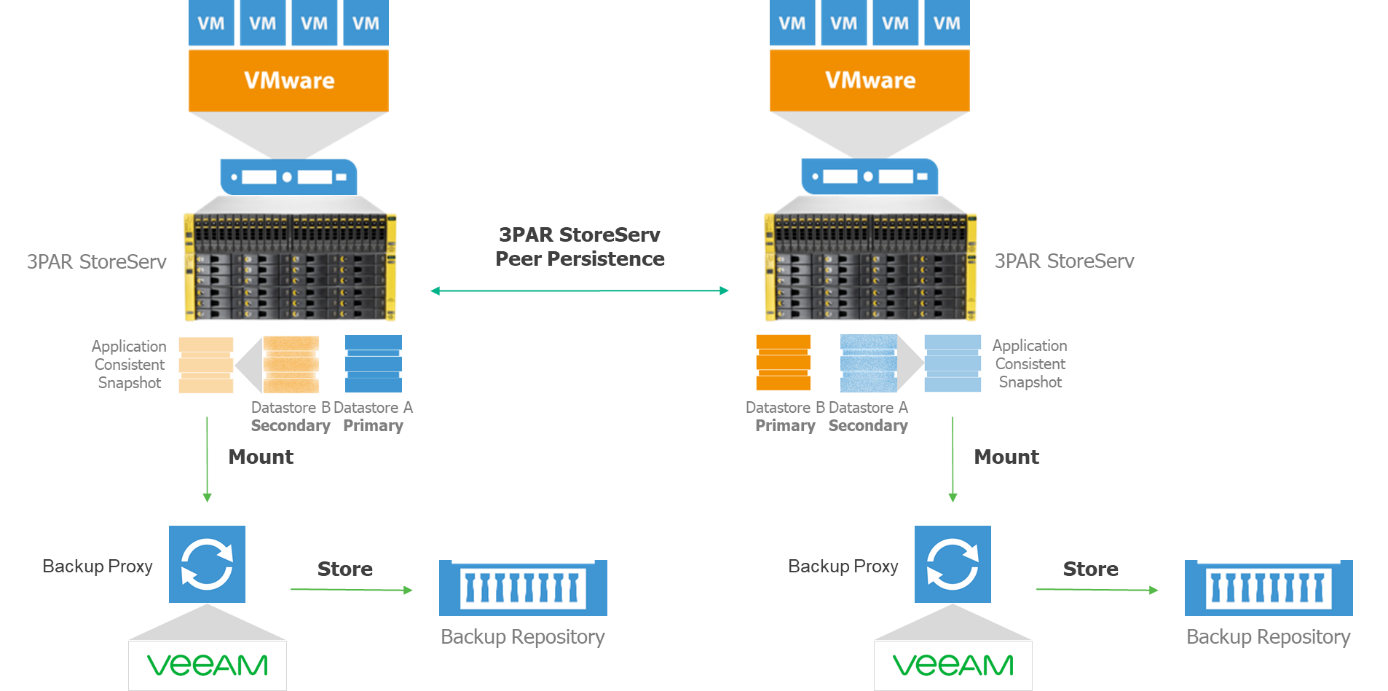You most likely know that Veeam leverages storage integration with Hewlett Packard Enterprise (HPE), Nimble Storage, NetApp, Dell EMC and Cisco HyperFlex to provide Backup from Storage Snapshots capability, which helps reduce the impact on the production data and performance due to data protection activity. You may also know that Veeam can also provide backup from a secondary storage array to reduce impact on the production environment even further with Nimble Storage and NetApp. And as an Alliance Systems Engineer in charge of HPE, I often get the following question from HPE technical field people: “Why don’t you support this with 3PAR?” Well, we do! There are some differences, but it’s still similar. Let’s explore how backup from a secondary 3PAR array works with Veeam Backup & Replication.
Backup from a secondary HPE 3PAR StoreServ array
In the case of NetApp or Nimble Storage, backup from a secondary array process is asynchronous. The storage snapshot is first triggered on the primary array, then it’s copied or replicated to the secondary storage array, and finally, the latter can be mounted on a Veeam proxy to run the actual backup job. It also means that active production data is stored on the primary array.
With HPE 3PAR StoreServ, the main requirement is that a Peer Persistence relationship is configured between the two arrays. This allows volumes to maintain a synchronous copy of themselves on the other array, which is the main difference compared to other storage systems. The replicated volumes are exported in a read-only mode and thus act as passive volumes. In such a configuration, both arrays are active and hold primary production volumes and secondary volumes. Note that we can back up or replicate VM data from both arrays, thanks to this.
The second difference here with HPE 3PAR StoreServ is the workflow during backup. When Veeam Backup & Replication is configured to use snapshots of secondary volumes, the storage snapshot is triggered directly on the secondary volume, which means that the primary one remains untouched from a backup activity perspective.
However, this isn’t the default behavior of Veeam Backup & Replication. If not configured accordingly, it will still trigger a storage snapshot on the primary volume. Let’s see how to configure the backup server to enable backup from a secondary HPE 3PAR StoreServ volume.
Configuring Veeam Backup & Replication
To enable backup from a secondary HPE 3PAR StoreServ volume, first follow these steps.
Once done, Now let’s take a look at the HPE 3PAR StoreServ Management Console when this is configured in a real production environment.
On the screenshot below, we can see the highlighted volume named ***5-VOL05-DD-RCPP owned by the 3PAR StoreServ system named ***PHY0015. We’re going to run a backup job for VMs stored on this volume.
Thanks to the existing Peer Persistence relationship between system ***PHY0015 and system ***PHY009, we can see three things on the next screenshot:
- The replica of the primary volume, which is named REPLI-***5-VOL05-DD-RCPP and owned by system ***PHY0009
- The storage snapshot taken on the replicated volume, which is named Veeam_ REPLI-***5-VOL05-DD-RCPP
- The comments in the details panel on the right, which says “This snapshot is used and managed by Veeam Backup & Replication”
Summary
Backup from Storage Snapshots is a great feature to better preserve production data and achieve a higher level of Availability. It’s even greater when you can make sure that active production data remains untouched by backup activity, thanks to the advanced storage integrations we have with our Alliance partners such as Nimble Storage and NetApp and the capacity to back up from a secondary storage array. And now you know that we can also do this with HPE 3PAR StoreServ!


